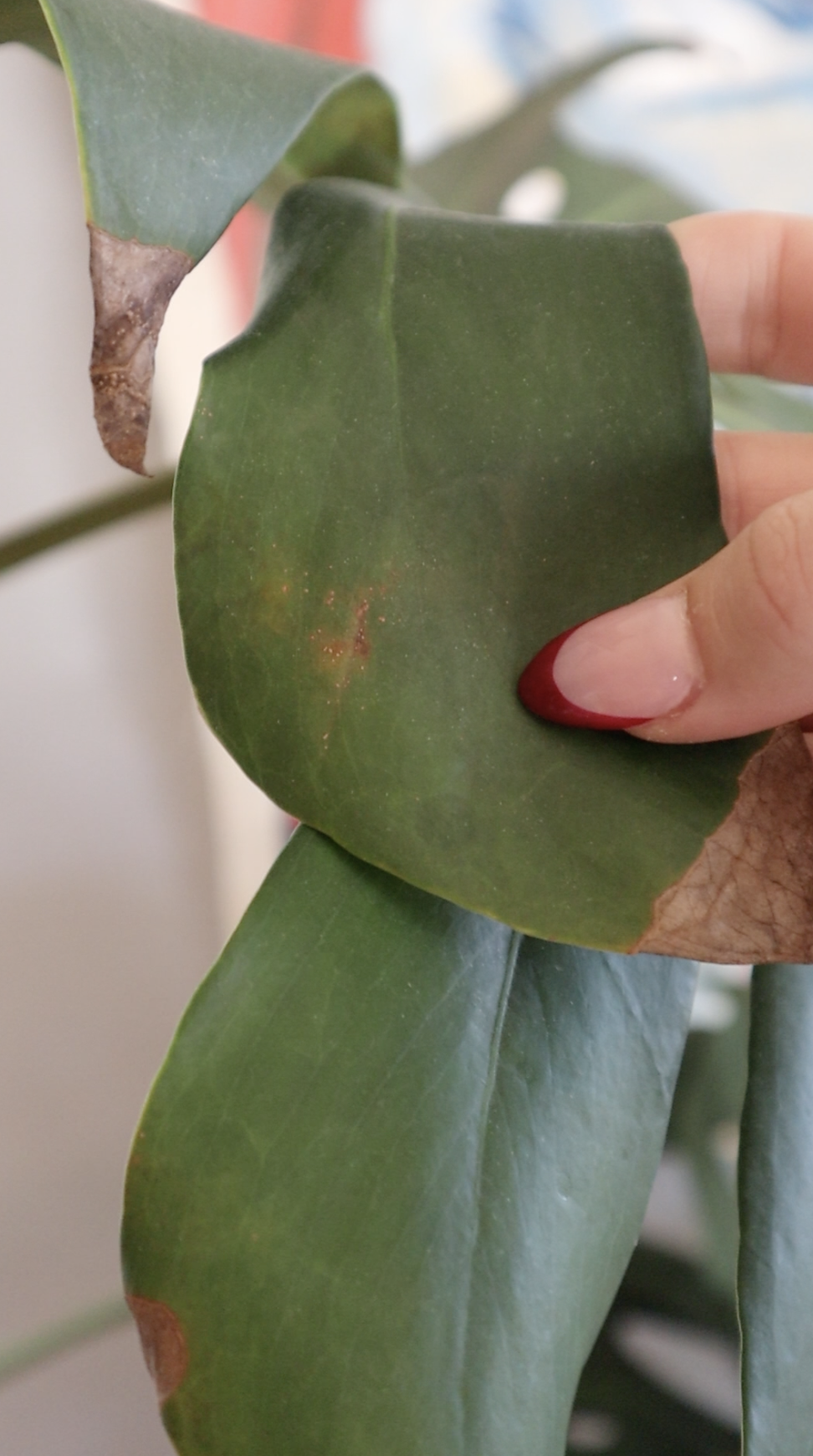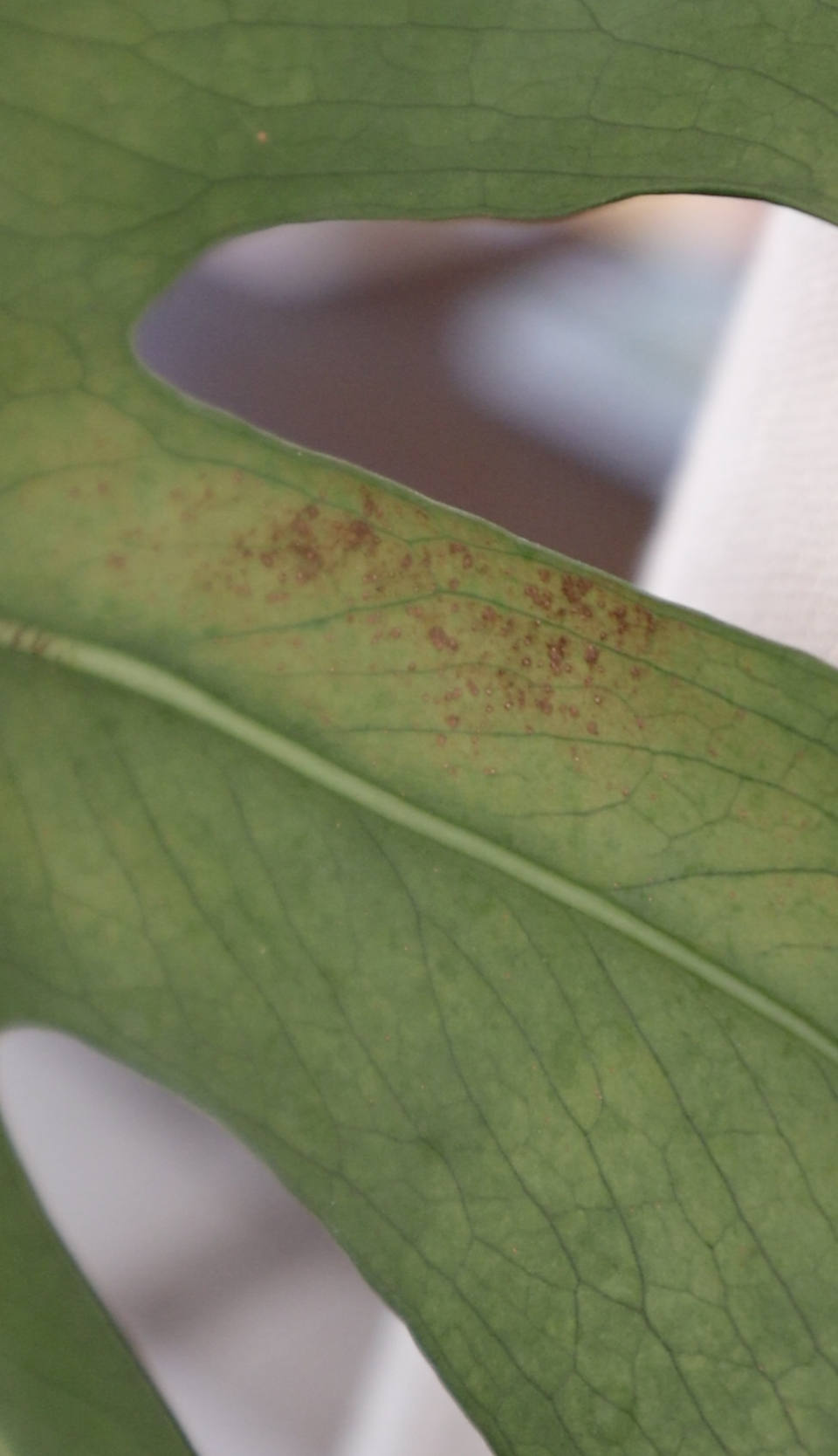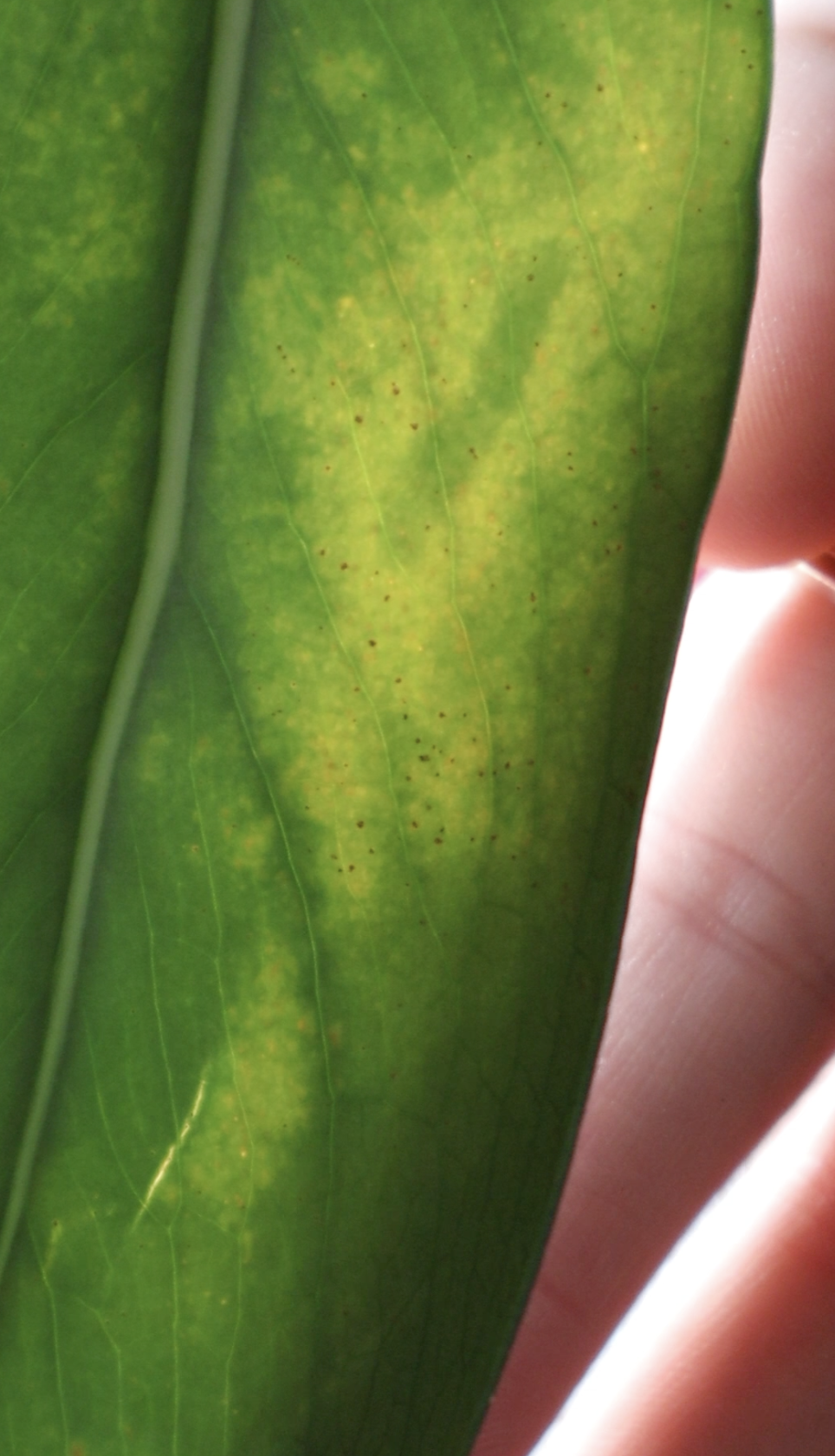All About Thrips
Photo credit: @nicolelarsongrows on Instagram
Small but mighty, thrips may be the most menacing house plant pest of all. They often fly (albeit terribly) under the radar, almost invisible to the naked eye– here’s how to spot signs of thrips, treat them, and beat them!
Thrips are tiny, elongated, winged insects that are usually pale, brown or black in color and move quickly. If you suspect thrips, you can do a ‘tap test’ to confirm: hold a sheet of paper under your plant and gently tap a leaf– if thrips are present, they may fall onto the paper making them more easily identifiable.
Odds are, you won’t notice the insects before the damage, so here are some cosmetic signs your unhappy house plant may be plagued by thrips:
Discolored or distorted leaves: Thrips feed by puncturing plant tissue and sucking out life (insert an Olivia Rodrigo Vampire reference to appear relatable here.) Their feeding process causes leaves to appear silver, beige, or bronze in clustered patches, become distorted, and have a speckled or stippled appearance.
An Infestation leaves a trail: When a thrips infestation is progressive, you might notice black specks all over your plants’ leaves or within the discolored patches… that’s thrips excrement. You may also find the winged adults crawling or hopping around your plants.
To effectively eradicate thrips, it can be helpful to understand their life cycle. They develop in stages: egg, larva, pre-pupa, pupa, and finally adult. Adult thrips lay eggs within the plant tissue– so you most likely won’t see eggs. Pre-pupa and pupa don’t feed and only move if they are disturbed. Larvae and adult thrips are fairly mobile and feed on the plant’s exterior– making them easier to identify as thrips. They are often found on the underside of plant leaves.
Thrips can multiply rapidly and asexually, so it only takes one thrip to start an infestation. Their entire life cycle can take as little as two weeks and multiple generations of thrips can be present at once on a plant.
The Cure
To note, everyone has different methods of pest treatments but, here are a few that we find effective.
To treat a plant with thrips, the first step is always to isolate the affected plant– adult thrips can migrate to plants on breezes, humans *shudder*, and by foot if plants are touching. They often come from gardens and greenhouses– which is why it’s important to examine every new plant you bring home and isolate them until proven unafflicted. Thrips are attracted to the color yellow, so you can use yellow sticky traps to catch mobile adults before they spread to other plants. You can also sprinkle diatomaceous earth in the soil of your plants to kill any larvae that drop into it.
For a mild infestation– leaves may start to look distorted or stippled and you may see tiny, elongated, pale larvae– hose, rinse, or spray your plant down to dislodge the active thrips. You can use neem oil or castile soap diluted with water to spray down the plant from there. Repeat and keep the plant or plants isolated until you’re certain thrips are no longer present.
For a more progressive infestation– you begin to see silver, bronze, or pale patches with black speckles– you can begin by hosing off the affected plant, removing any heavily affected leaves, then go in with insecticidal soap or beneficals. Repeat this process until you stop seeing thrips and thrips damage.
Beneficials are natural predators to various houseplant pests– an integrated pest management system can be an effective way to keep plant pests at bay without disrupting the natural order of your plants’ life cycle.
Prevention
The key to infestation prevention is to check up on your plants regularly– before they start showing signs of pest problems. It’s always much easier to rid your plants of pests if you can catch it early.
Like we mentioned, inspect any new plant you bring home– the new kid on the block could bring some nasty friends with it.
Avoid keeping your plants next to open windows in the summer as thrips can travel on a breeze through window screens.
You can even use common kitchen herb plants as natural deterrents to thrips! Some studies have found that thrips are repelled by rosemary, garlic, basil, and catnip. You can place vulnerable plants beside any of these plants to help prevent a thrips infestation.
If you wanna talk about bugs or want help with unhappy house plants, reach out to us!
Happy planting!
Kelly




